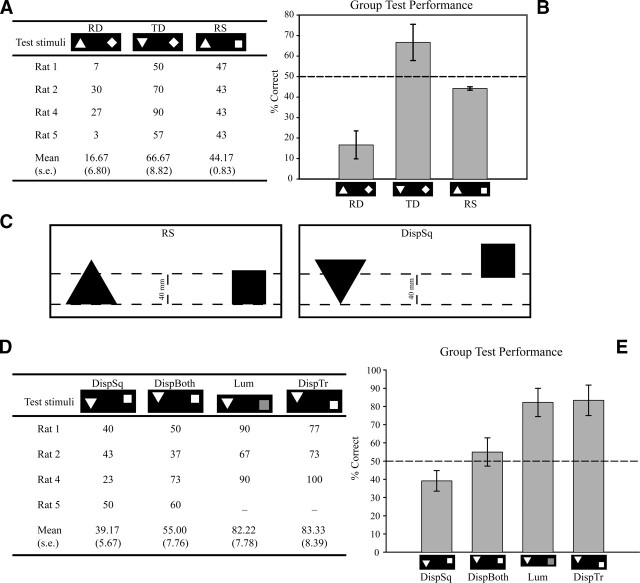Figure 3.
Individual (A) and group (B) performance with the stimuli testing the use of lower hemifield features. The preference for the negative shape can be clearly seen in the RD trials. (C) (For illustrative purposes the contrast polarity of the stimuli has been reversed.) (Left) The Reflected-square stimuli showing the level (upper dotted line) below which both stimuli possess equal area. It was hypothesized that the rats compared the shapes only below this 40-mm level, which thus constitutes the upper boundary of the lower hemifield. (Right) The DispSq stimuli. When the square was elevated to the level shown, the areas of the shapes that lay within the critical lower hemifield (between the dotted lines) were now reversed, the triangle having a greater area than the square. As predicted, this caused a reversal of the rats’ choice preferences (see panel D; especially rat 4). Individual (D) and group (E) performance with the stimuli testing the use of lower hemifield luminance. Error bars indicate the standard errors. The performance of rats when the square was elevated as described in panel C was at or considerably below chance, confirming that the subjects used area rather than shape to make the discrimination. When both shapes were displaced, the rats were also poor at discriminating, suggesting that their looking was guided by a touchscreen-based frame of reference rather than a shape-based one. Interestingly, when the luminance of the square in the critical region was reduced by dimming the shape rather than elevating it, performance remained high. Thus, although area is clearly a factor in the discrimination, this may be assessed on the basis of number of pixels rather than total brightness.

